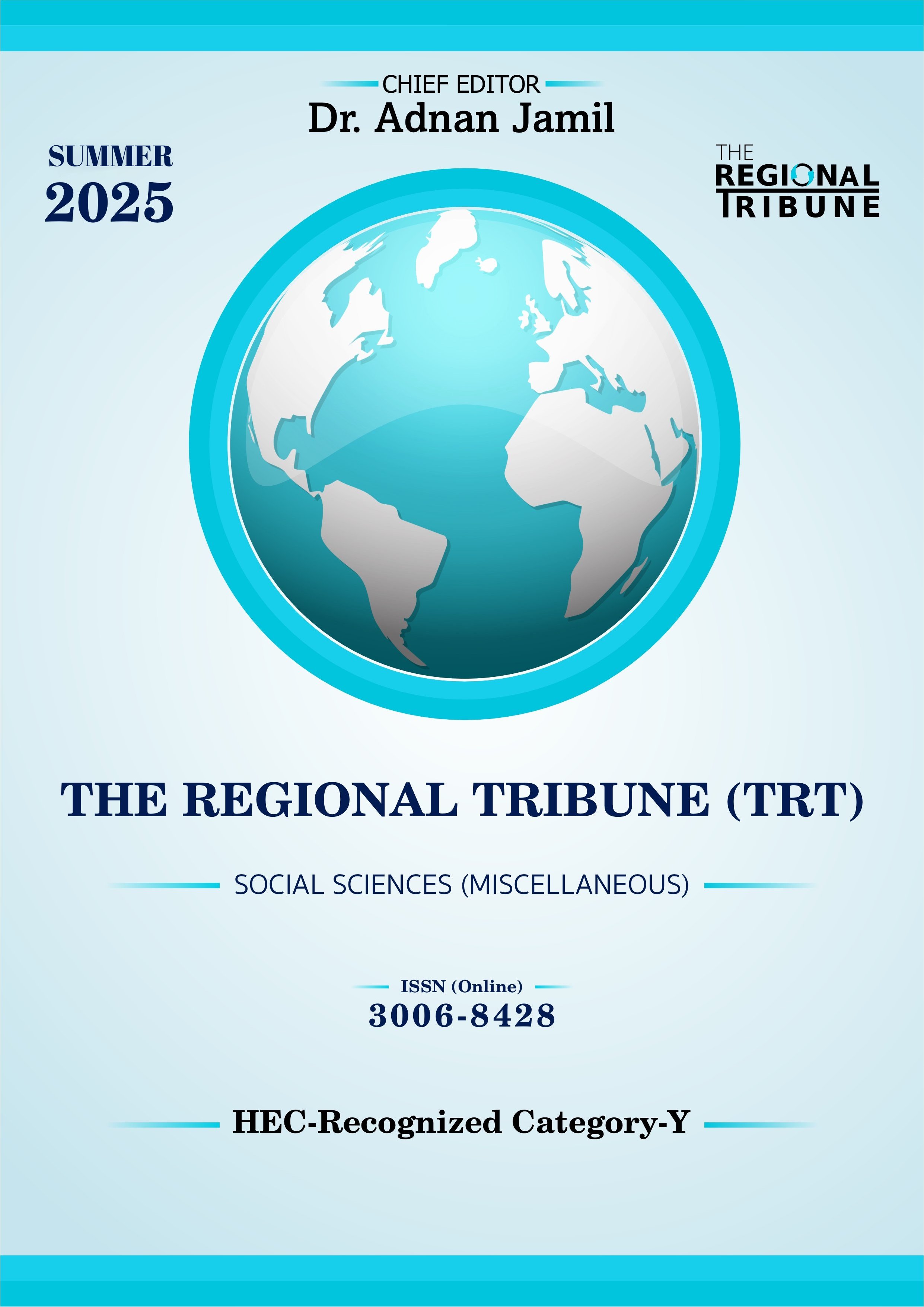Dynamics of Viewer's Attention: Making Content More Engaging in a Vertical Frame
DOI:
https://doi.org/10.55737/trt/SR25.138Keywords:
Vertical Video, Eye-Tracking, Visual Attention, Cognitive Load, Fixations, Saccades, Center FramingAbstract
The proliferation of mobile-first social media platforms has established vertical video (9:16 aspect ratio) as a dominant format for content consumption. However, established principles of visual composition, largely derived from landscape cinematography, may not directly apply to this narrow, portrait-oriented frame. This study investigates the impact of subject positioning on viewer attention within vertical videos. Using mobile camera-based eye-tracking technology provided by RealEye.io, we conducted a within-subjects experiment with 40 participants. Each participant viewed two purpose-created, 20-second stimulus videos. The first video (Dynamic AOI) featured the primary Area of Interest (AOI) in multiple, varied locations throughout the frame. The second video (Central AOI) consistently positioned the AOI in the central third of the frame. Key eye-tracking metrics were analyzed, including fixation duration, saccade count, and a derived attention efficiency metric, Coefficient K (ratio of fixations to saccades). The results revealed a statistically significant difference between the two conditions. The Central AOI video elicited significantly longer average fixation durations and fewer saccades compared to the Dynamic AOI video. Consequently, Coefficient K was substantially higher for the centrally framed content. These findings suggest that central framing in vertical video reduces cognitive load, minimizes visual search behavior, and facilitates more sustained and focused attention on the primary subject. The study concludes that for content creators, marketers, and platform designers seeking to maximize viewer engagement and message retention in the vertical video ecosystem, a deliberate strategy of centering the primary subject is demonstrably more effective
References
Álvarez-Álvarez, C., & del Puerto Carrizosa, M. J. (2022). Comparative analysis of the social networks of public, private/subsidized secondary schools in Cantabria. Edutec, 82. https://doi.org/10.21556/edutec.2022.82.2667
Amirshahi, S. A., Hayn-Leichsenring, G. U., Denzler, J., & Redies, C. (2014). Evaluating the Rule of Thirds in Photographs and Paintings. Art and Perception, 2(1–2). https://doi.org/10.1163/22134913-00002024
Cipresso, P., Giglioli, I. A. C., Raya, M. A., & Riva, G. (2018). The past, present, and future of virtual and augmented reality research: A network and cluster analysis of the literature. Frontiers in Psychology, 9(NOV). https://doi.org/10.3389/fpsyg.2018.02086
Clayton, R. (2022). The Context of Vertical Filmmaking Literature. Quarterly Review of Film and Video, 39(3). https://doi.org/10.1080/10509208.2021.1874853
Cvancara, D. J., Wood, H. A., Aboueisha, M., Marshall, T. B., Kao, T. C., Phillips, J. O., Humphreys, I. M., Abuzeid, W. M., Lehmann, A. E., Kojima, Y., & Jafari, A. (2024). Cognition and saccadic eye movement performance are impaired in chronic rhinosinusitis. International Forum of Allergy and Rhinology, 14(7). https://doi.org/10.1002/alr.23320
Goetz, J. N., & Neider, M. B. (2024). Keep it real, keep it simple: the effects of icon characteristics on visual search. Behaviour and Information Technology, 43(15). https://doi.org/10.1080/0144929X.2023.2286527
Hauser, F., Mottok, J., & Gruber, H. (2018). Eye tracking metrics in software engineering. ACM International Conference Proceeding Series. https://doi.org/10.1145/3209087.3209092
Kiefer, P., Giannopoulos, I., Raubal, M., & Duchowski, A. (2017). Eye tracking for spatial research: Cognition, computation, challenges. In Spatial Cognition and Computation 17(1–2). https://doi.org/10.1080/13875868.2016.1254634
Le Meur, O., Le Callet, P., & Barba, D. (2007). Predicting visual fixations on video based on low-level visual features. Vision Research, 47(19). https://doi.org/10.1016/j.visres.2007.06.015
Mazzucchi, N. (2017). WU Tim, The Attention Merchants. The Epic Scramble to Get Inside Our Heads, New York: Alfred A. Knopf, octobre 2016, 416 p. Futuribles, N° 421(6). https://doi.org/10.3917/futur.421.0111c
Mohammad Alzubi, A. (2022). Impact of New Digital Media on Conventional Media and Visual Communication in Jordan. Journal of Engineering, Technology, and Applied Science, 4(3). https://doi.org/10.36079/lamintang.jetas-0403.383
Navarro-Güere, H. (2023). Vertical video. A review of the literature on communication. Revista Mediterranea de Comunicacion, 14(1). https://doi.org/10.14198/MEDCOM.23028
Ohta, T., Tanaka, K., & Yamamoto, R. (2023). Scene graph descriptors for visual place classification from noisy scene data. ICT Express, 9(6). https://doi.org/10.1016/j.icte.2022.11.003
Rathod, H., & Agal, S. (2023). A Study and Overview on Current Trends and Technology in Mobile Applications and Its Development. Lecture Notes in Networks and Systems, 754 LNNS. https://doi.org/10.1007/978-981-99-4932-8_35
Raursø, N. E., Rasmussen, M. E., Persson, M. K., Petersen, T. A., Garðarsson, K. B., & Schoenau-Fog, H. (2021). Lean-Back Machina: Attention-Based Skippable Segments in Interactive Cinema. Lecture Notes in Computer Science (Including Subseries Lecture Notes in Artificial Intelligence and Lecture Notes in Bioinformatics), 13138 LNCS. https://doi.org/10.1007/978-3-030-92300-6_12
Rayner, K. (1998). Eye Movements in Reading and Information Processing: 20 Years of Research. Psychological Bulletin, 124(3). https://doi.org/10.1037/0033-2909.124.3.372
Richardson, D. C., Dale, R., & Spivey, M. J. (2002). Eye movements in language and cognition A brief introduction. In Methods in Cognitive Linguistics 1.
Rodriguez, L., & Dimitrova, D. V. (2011). The levels of visual framing. Journal of Visual Literacy, 30(1). https://doi.org/10.1080/23796529.2011.11674684
Shibli, D., & West, R. (2018). Cognitive Load Theory and its application in the classroom. Impact: Journal of the Chartered College of Teaching, 2.
Stokel-Walker, C. (2021). What we know about covid-19 reinfection so far. In The BMJ 372. https://doi.org/10.1136/bmj.n99
Sweller, J., van Merriënboer, J. J. G., & Paas, F. (2019). Cognitive Architecture and Instructional Design: 20 Years Later. Educational Psychology Review 31(2). https://doi.org/10.1007/s10648-019-09465-5
Tatler, B. W., Wade, N. J., Kwan, H., Findlay, J. M., & Velichkovsky, B. M. (2010). Yarbus, eye movements, and vision. I-Perception, 1(1). https://doi.org/10.1068/i0382
Tuna, G. H. (2018). A construção de diferenças: Silva Alvarenga (1749-1814) e os limites de sua condição de fiel vassalo de Sua Majestade. História (São Paulo), 36(0). https://doi.org/10.1590/1980-436920170000000025
van Gog, T., & Scheiter, K. (2010). Eye tracking as a tool to study and enhance multimedia learning. Learning and Instruction 20(2). https://doi.org/10.1016/j.learninstruc.2009.02.009
Weber, K. P., Aw, S. T., Todd, M. J., McGarvie, L. A., Curthoys, I. S., & Halmagyi, G. M. (2008). Head impulse test in unilateral vestibular loss: Vestibulo-ocular reflex and catch-up saccades. Neurology, 70(6). https://doi.org/10.1212/01.wnl.0000299117.48935.2e
West, E. R., & Cepko, C. L. (2022). Development and diversification of bipolar interneurons in the mammalian retina. Developmental Biology, 481. https://doi.org/10.1016/j.ydbio.2021.09.005
Wolf, A., Tripanpitak, K., Umeda, S., & Otake-Matsuura, M. (2023). Eye-tracking paradigms for the assessment of mild cognitive impairment: a systematic review. Frontiers in Psychology 14. https://doi.org/10.3389/fpsyg.2023.1197567
Yarbus, A. L. (1967). Eye Movements During Perception of Complex Objects. In Eye Movements and Vision. https://doi.org/10.1007/978-1-4899-5379-7_8
Downloads
Published
Issue
Section
License

This work is licensed under a Creative Commons Attribution-NonCommercial 4.0 International License.



